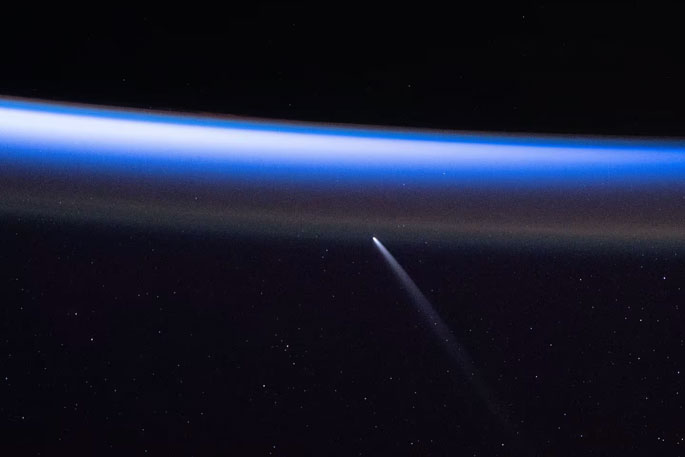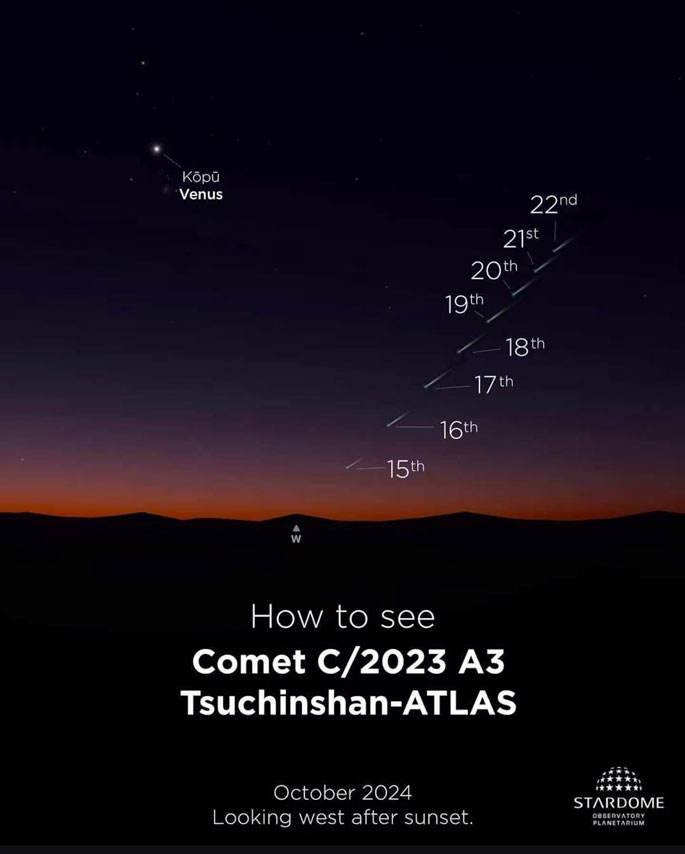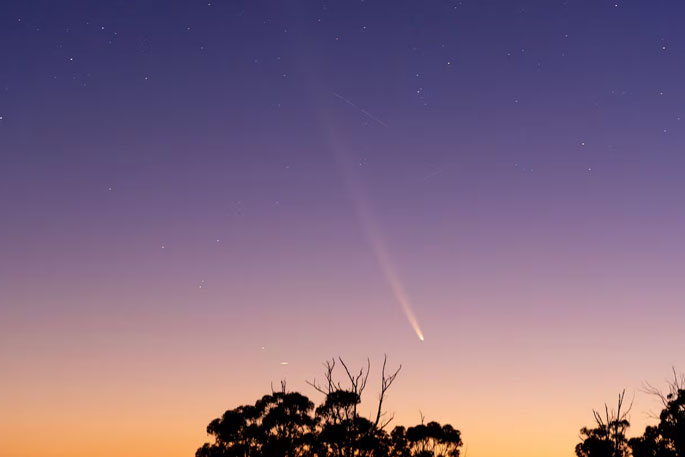New Zealanders will have a chance to spot a comet with the naked eye that hasn’t been seen in our skies for 80,000 years.
Comet C/2023 A3 is expected to be visible to the naked eye in the western skies of the country from Tuesday until later in the week.
Stardome astronomer Josh Aoraki told the Herald that the best place to see the comet would be anywhere that has a clear unobstructed view of the western horizon.
“You’re going to see a really bright star which is Venus, and if you look below that to the right, you might see this little fuzzy patch in the sky. That’s the comet.”
The Stardome astronomer said the comet was likely to have a tail extending from the back.
 Comet C/2023 A3 (Tsuchinshan-ATLAS) was millions of kilometres away from Earth in this photograph from the International Space Station as it orbited above the South Pacific Ocean southeast of New Zealand just before sunrise. Photo / Matthew Dominick, Nasa.
Comet C/2023 A3 (Tsuchinshan-ATLAS) was millions of kilometres away from Earth in this photograph from the International Space Station as it orbited above the South Pacific Ocean southeast of New Zealand just before sunrise. Photo / Matthew Dominick, Nasa.
Aoraki said the best chance of seeing the comet would be to leave the city due to light pollution.
“In Auckland, if you go out to places like Muriwai and Piha, that will give you the best shot.”
He said the prime time to view the comet would be during a 45-minute to hour window just after sunset.
“It’s a fairly bright comet. We don’t often get bright naked-eye visibility comets.
“They’re very rare and unpredictable. But this has been the most promising one in several years.”
He estimated Comet C/2023 A3 was 85 million kilometres away and only came along once in a human lifetime.
“It’s not like Halley’s Comet that goes around the sun in 80 years,” he said.
“It has a very long orbit so it’s a once-in-a-lifetime thing to see this comet.”
 A once in a lifetime Comet C/2023 A3 will be visible with the naked eye in the western skies.
A once in a lifetime Comet C/2023 A3 will be visible with the naked eye in the western skies.
“It’s quite rare to see a naked-eye comet so I implore people to go and see it.”
This potential sighting comes a week after Aurora Australis lit up the skies in blazing purple, blue and pink for Southland and Otago residents.
People were given a rare glimpse into the mechanics of the sun and its effects on our planet after the solar flares caused the colourful display last week.
Solar flares are powerful bursts of radiation and energy blasted from the sun’s surface when built-up magnetic energy is suddenly released.
They often happen near sunspots, where the Sun’s magnetic fields are particularly strong.
Particularly when such flares are accompanied by coronal mass ejections, they can release massive clouds of charged particles, or plasma, that travel through space and interact with Earth’s magnetic field.
This activity can lead to geomagnetic storms, which, in turn, can trigger dazzling auroras visible in our night skies.



0 comments
Leave a Comment
You must be logged in to make a comment.